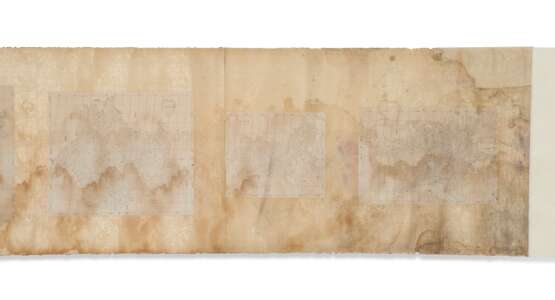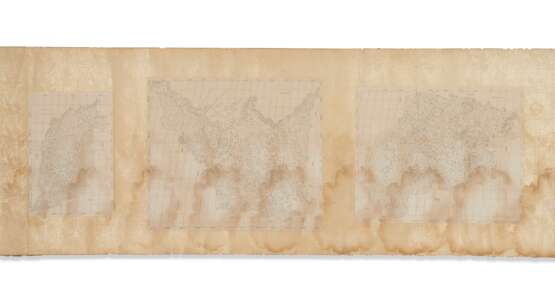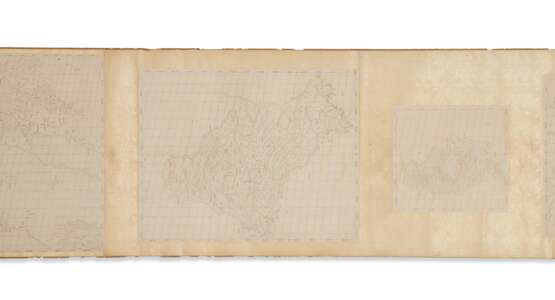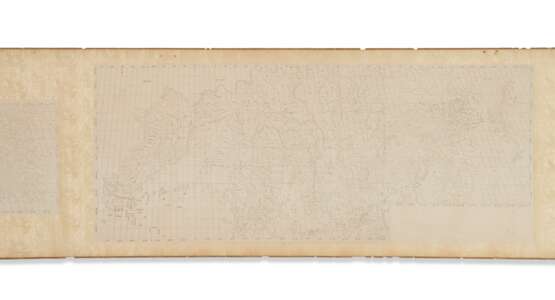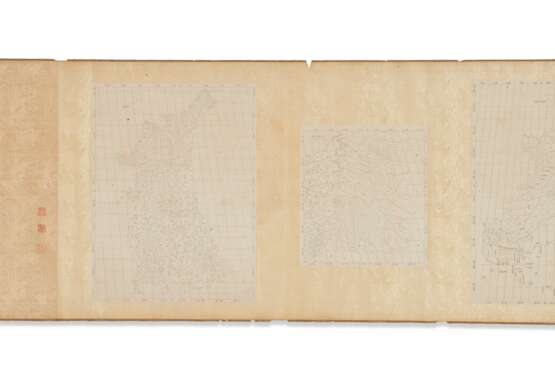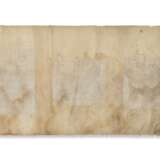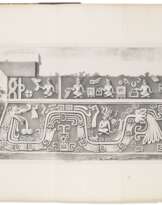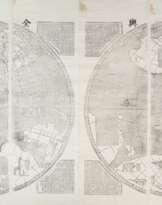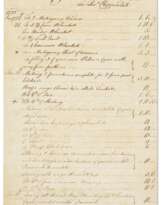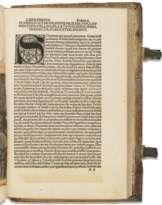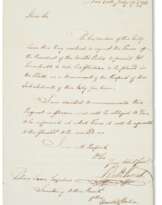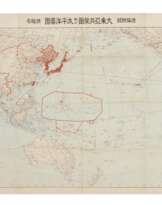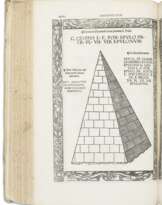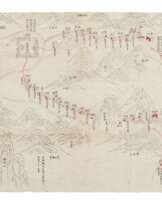ID 627581
Lot 91 | The Kangxi provincial atlas of China
Estimate value
$ 40 000 – 60 000
A milestone handscroll atlas of China's territory, over 32 feet in length. This extremely long handscroll contains 15 mapsheets showing 17 provinces and districts: Guangxi Province, Guizhou Province, Yunnan Province, Sichuan Province, Shaanxi Province, Shanxi Province, Rehe Region, Hetao Region, Kumul Khanate, Selenga River, Amur River, Ussuri River, Korea, etc. The atlas was the result of a nationwide field survey initiated by Emperor Kangxi during 1708-1718. Ten French Jesuits were invited to provide technical supports, including Jean-Baptiste Régis (1663-1738) and Pierre Jartoux (1669-1720). The survey adopted European triangulation methods and Nicolas Sanson’s projection, providing a detailed European approach to Chinese cartography rather than the traditional Sinocentric version as here (Hsieh and Ehrenberg). In the middle of Kangxi’s reign, Manchu’s rule over Han China was relatively stable. However, during the negotiation of the Treaty of Nerchinsk, Emperor Kangxi realized that traditional Chinese maps were not able to clearly mark out the northeast border between Russia and China, an aim which their accurate Western counterparts achieved. Modernizing Chinese cartography became important and twenty years later, the surveys started. The coverage of the Overview Atlas of Imperial Territories is expansive, extending to the north at the Amur River and Korea, to the south at Qiongzhou Prefecture (modern Hainan Province), to the east at Taiwan, and to the west at Kumul Khanate. Over 600 latitude and longitude coordinates were recorded(Chan).
The first version of this map were the very first drafts of individual regions completed by Jesuits and Qing officials on-site; followed by the manuscript transcribed versions of individual districts and the whole nation; the first woodblock version (28 maps) in 1717; copperplate prints (with Manchurian annotations) produced by Matteo Ripa (1682-1746) during 1719-1721; the second woodblock version (32 maps) also produced during 1719-1721; colored manuscript copies with textual commentaries, a 20th century woodblock version (36 maps) printed by Walter Fuchs (1902-1979), etc. The most prominent pictorial difference between the woodblock and copperplate prints lies in the depiction of mountains, which are composed of horizontally overlapped hills with angular peaks in the woodblock prints, and consist of vertically overlapped hills with round peaks in the copperplate version. Another difference is that the copperplate version contains Manchurian texts (Li). The present lot is a woodblock. However, it’s not possible to determine if it's the first edition printed in 1717 with 28 maps, or one of the later ones in 1719 or 1721 with 4 more maps, as the present lot is incomplete, and the maps it contains are included in both versions.
“This enormous atlas of Qing China, printed in several versions, resulted from the largest mapping project of the early modern world and can be considered unique in at least three aspects. First, it was largely based on field surveys conducted by mixed teams of Qing officials and European missionaries and covers a large part of continental East Asia. Second, it is probably the most important example of early modern state-sponsored cartography, involving not just a few able cartographers but an entire state apparatus spurred on and personally supervised by an activist emperor. And third, it is a creative answer to the unique needs of Qing frontier management and imperial control, made possible by the integration, in mensurational and in representational terms, of European and East Asian cartographic practices” (Cams). Pitifully, the atlas was locked away in the palace. The advanced cartographical techniques applied to produce such an atlas were therefore not known to the public. Other copies of the 1717-1721 woodblock versions of the atlas can be found in the collection of the Palace Museum, Beijing and the First Historical Archives of China. References: Kuo-Hsin Hsieh & Ralph E. Ehrenberg, Reading Imperial Cartography: Ming-Qing Historical Maps in the Library of Congress (2013), pp. 67-74; Libby Lai-Pik Chan, East Meets West - Maritime Silk Routes in the 13th-18th Centuries (2016); Kwong-Lim Tam, Cong Fangyuan dao Jingwei: Xianggang yu Huanan Lishi Ditu Zhencang [From Circular and Square Shapes to Meridian and Parallel Lines: Collected Treasures of Historical Maps of Hong Kong and South China] (2010), pp. 61, pl. 25-26; Mario Cams, “Not Just a Jesuit Atlas of China: Qing Imperial Cartography and Its European Connections,” Imago Mundi, 69:2 (2017), pp. 188-201; Xiaocong Li, “Study on Mapping Atlas of the Empire Kangxi Era with Editions,” The National Palace Musuem Research Quarterly, vol. 30, no. 1 (2012), pp. 55-86.
15 woodblock maps of regions in and around China, ink printed on paper, all mounted together as a handscroll with old yellow silk borders decorated with phoenix pattern, modern white silk inner wrapping, paper flap at the end of the scroll, wood roller, approx. 670 x 9920 mm overall. All maps in grids defined by meridian and parallel lines. Three apocryphal collectors seals later added to the silk flap after the fifteenth map. (Paper lightly browned, dampstaining throughout the mounting and the maps till the eighth map, tears and slight browning along the silk margins, wormholes in the map carefully repaired; map one [Guangxi Province] is stained and discolored, with holes, creases, and paper repairs to verso; map two [Guizhou Province] with light blue spots; from map eight to the end of the scroll there is very light staining and spotting; a 13mm split on the paper mounting after the fifteenth map. Provenance: China Guardian, November 11, 2008, lot 2636.
Exhibited: “East Meets West: Maritime Silk Routes in the 13th-18th Centuries” Hong Kong Maritime Museum, August 2018 to November 2011; “The World on Paper: From Square to Sphericity,” Hong Kong Maritime Museum, December 2019 to March 2020.
Please note that this lot is subject to an import tariff. If the buyer instructs Christie’s to arrange shipping of the lot to a foreign address, the buyer will not be required to pay the import tariff. If the buyer instructs Christie’s to arrange shipping of the lot to a domestic address, if the buyer collects the property in person, or if the buyer arranges their own shipping (whether domestically or internationally), the buyer will be required to pay the import tariff. Please contact Post Sale Services on +1 212 636 2650 prior to bidding for more information.
| Artist: | William Shakespeare (1564 - 1616) |
|---|---|
| Applied technique: | Pencil |
| Artist: | William Shakespeare (1564 - 1616) |
|---|---|
| Applied technique: | Pencil |
| Address of auction |
CHRISTIE'S 8 King Street, St. James's SW1Y 6QT London United Kingdom | |
|---|---|---|
| Preview |
| |
| Phone | +44 (0)20 7839 9060 | |
| Buyer Premium | see on Website | |
| Conditions of purchase | Conditions of purchase |
